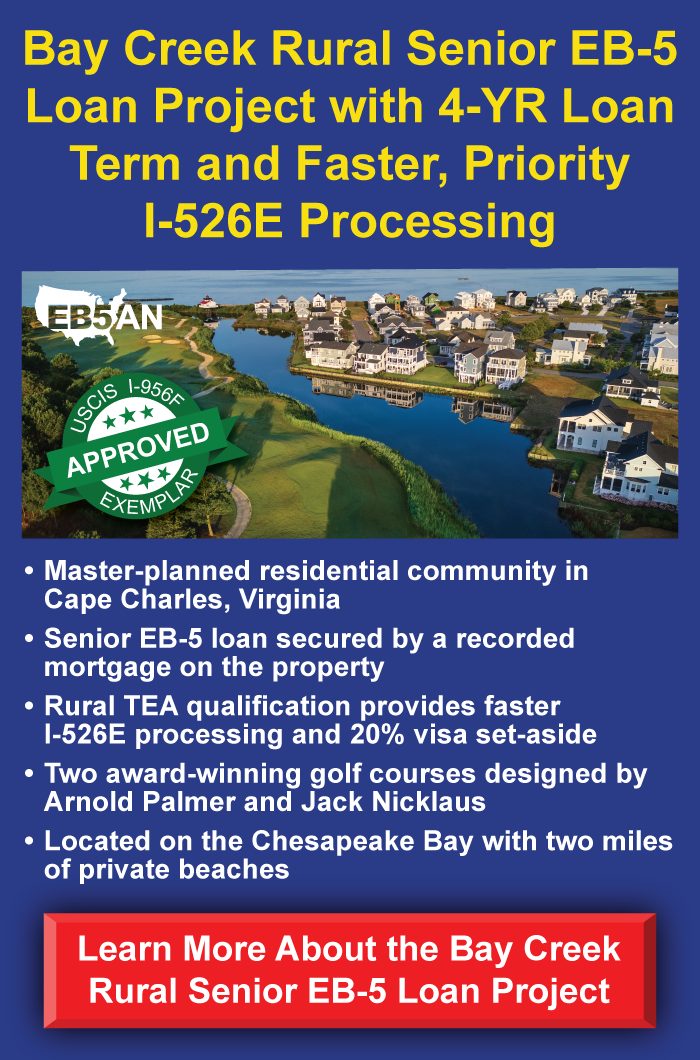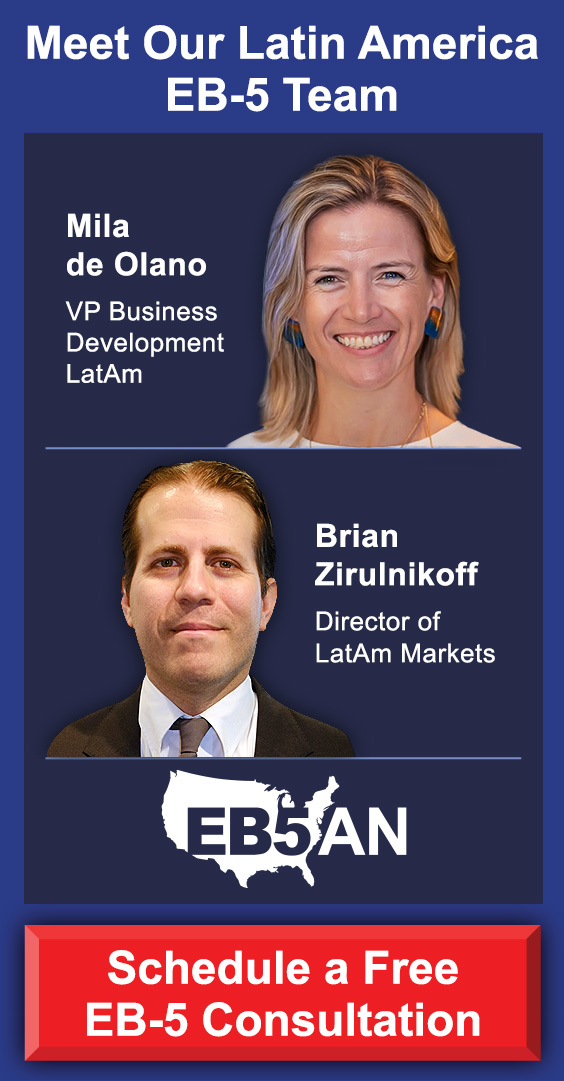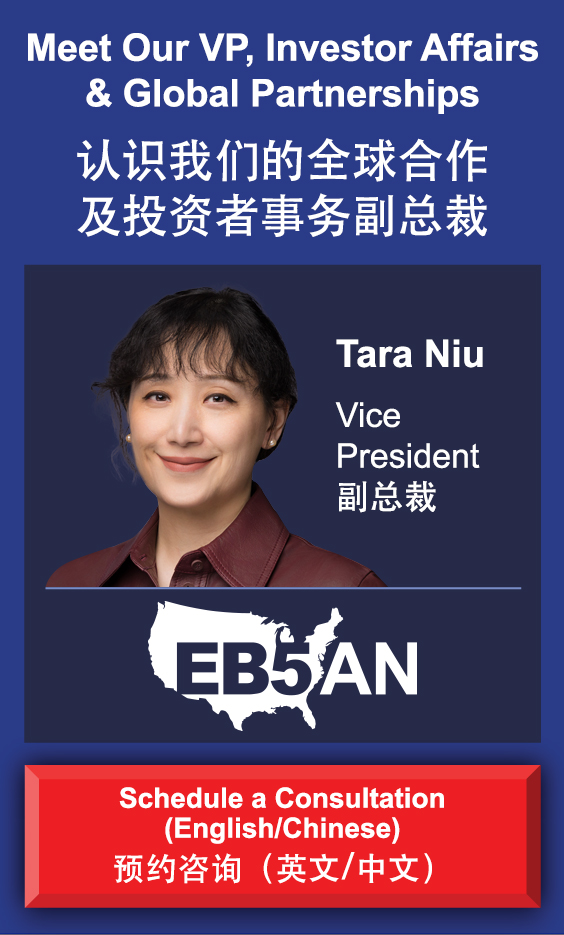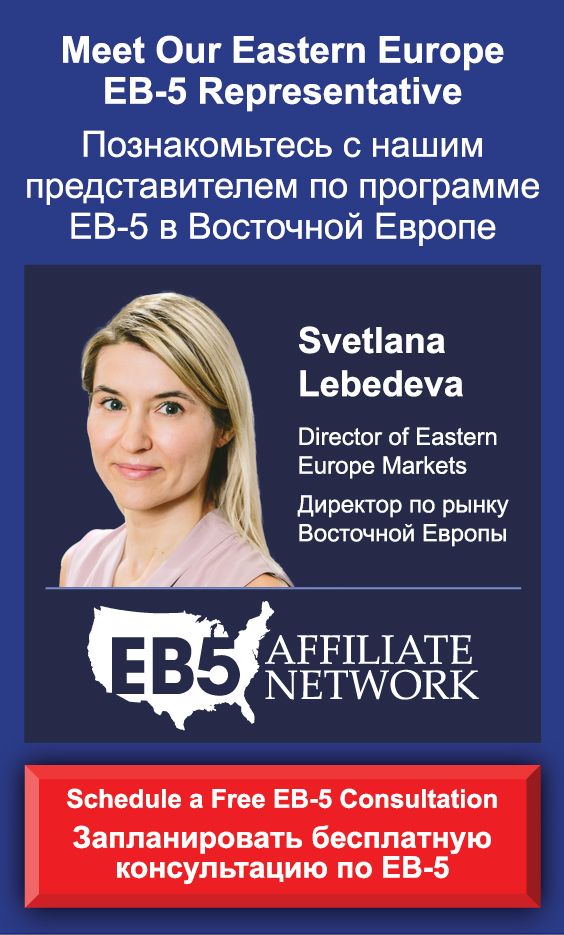Business professionals and entrepreneurs from all over the world are drawn to the United States, and it’s easy to see why. The United States is a global business hub known for its unparalleled economic opportunities, access to capital, and stable regulatory environment.
The country offers many opportunities to foreign nationals, but securing the right visa can be complex, time-consuming, and highly competitive. An applicant must prove to United States Citizenship and Immigration Services (USCIS) that they’ve fulfilled the criteria for a visa program.
In this article, we’ll explain what you need to know about short-term business visas and employment-based Green Card options. We’ll also tell you why the EB-5 program is the most secure and flexible option for many entrepreneurs and business professionals, and where you can go for expert help.
Short-Term Visa Options for Business Professionals and Entrepreneurs
Employment-Based Green Card Options
- EB-1C: Multinational Executive or Manager Green Card
- EB-2 National Interest Waiver
- EB-3A Skilled Worker or EB-3B Professional Visa
- The EB-5 Immigrant Investor Program: A Secure Pathway to U.S. Residency
- Why EB-5 Is a More Secure Option for Entrepreneurs and Business Professionals
Work With EB-5 Professionals: EB5AN
Short-Term Visa Options for Business Professionals and Entrepreneurs
B-1 Business Visitor Visa
This visa allows temporary entry to the United States for business-related activities such as participating in meetings, attending conferences, or negotiating contracts. The B-1 visa enables its holders to explore a variety of investment opportunities.
However, it comes with notable restrictions. The B-1 visa does not grant employment authorization. It does not permit a recipient to manage a business, engage in hands-on business operations, or get a salary from a U.S.-based company while inside the United States.
It also permits only a limited stay in the United States. Typically the duration is up to six months. Extensions are possible in 3-6 month increments, up to a maximum of one year for any one trip.
There is a risk of denial at entry. An applicant who does not provide compelling evidence that they have legitimate business dealings in the United States, intend to return to their home country, and have enough money to cover trip expenses may receive extra scrutiny from U.S. Customs and Border Protection (CBP).
While B-1 visitors cannot legally work in the country, they may attend interviews and explore future employment opportunities, but they must not engage in job-seeking activities that violate B-1 restrictions.
E-2 Treaty Investor Visa
The E-2 visa is available only to citizens of countries that have a treaty of commerce and navigation with the United States. A few of these 80+ countries include Canada, the United Kingdom, and Germany. Here’s a complete list of treaty countries.
This visa requires a substantial but unspecified investment in a new or existing business in the United States. The qualifying amount must be kept at risk; the investor cannot simply withdraw the funds whenever they want.
To be approved, the investor must come to the United States and work as an executive, manager, or essential employee of a company owned by a national of their home country. They should also own at least 50% of the business or have operational control of it. The business must be active and for-profit. Passive investments that sit in a bank account will not qualify.
This visa offers several advantages. For example, after the two-year initial period of validity, it is renewable in two-year increments indefinitely as long as the business remains active. In addition, an investor’s spouse can apply for a work permit.
However, the visa comes with a few drawbacks. The most notable is that it does not provide a direct pathway to a Green Card. To obtain one, the individual must switch to another visa category (such as EB-5).
It’s also not available to many individuals from high-demand visa countries like China or India.
L-1 Intracompany Transferee Visa
The L-1 visa lets multinational companies transfer selected employees from a foreign office to a U.S. office temporarily.
To be eligible, the visa holder must have been employed at the multinational company’s office outside the United States for at least one year out of the preceding three years.
The multinational company must transfer the individual to a U.S. company that is a branch, subsidiary, or affiliate of the foreign entity.
The L-1 visa has two subcategories:
- L-1A visa: For executives and managers. This visa can eventually lead to an EB-1C Green Card, which is meant for multinational executives and managers.
- L-1B visa: For specialized knowledge employees. The visa does not provide a direct path to a Green Card.
It’s a dual intent visa, which means that someone who holds it can work in the United States temporarily and also intend to immigrate to the United States permanently.
However, some applicants find the following aspects of the L-1 visa to be disadvantageous.
- Only those who have specific job functions can be approved.
- Applicants are tied to a specific employer and cannot change employers while holding the visa.
- The L-1A and L-1B visas have a maximum validity of seven and five years respectively. Neither is a permanent solution for an investor looking to relocate to the United States.
Employment-Based Green Card Options
Employment-based visas are a popular pathway to U.S. lawful permanent residency. An employment based immigrant visa lets a foreign national who has certain skills, qualifications, and/or a job offer come to the United States temporarily or permanently.
With most employment-based visas, a U.S. employer that offers a job to a foreign national will file Form I-140 (Immigrant Petition for Alien Worker) with USCIS on the foreign applicant’s behalf.
The employment-based first preference visa is meant for individuals with exceptional abilities and achievements or those with certain professional experiences. This visa category contains several subcategories, one of which is aimed at certain managers and executives.
EB-1C: Multinational Executive or Manager Green Card
The EB-1C visa offers a direct pathway to U.S. lawful permanent residency.
EB-1C visas are for multinational executives or managers who have been employed for at least one of the three preceding years by the overseas affiliate, parent, subsidiary, or branch of the U.S. employer. This type of visa requires a job offer from a U.S. employer.
This visa also requires the applicant to submit extensive documentation. This includes financial records that show the U.S. business has been active for at least a year, organizational charts demonstrating a qualifying relationship between companies, and documentation of past and future executive or management positions.
EB-2 National Interest Waiver
The employment-based second preference visa is meant for individuals who have advanced degrees or exceptional abilities. One subcategory—the EB-2C National Interest Waiver (NIW)—is aimed at foreign nationals who have the potential to do work that benefits U.S. interests substantially.
The EB-2 NIW grants Green Cards under more favorable eligibility criteria to individuals with skills and abilities that would be of great value to the United States. They can self-petition. The NIW approves such applicants without requiring them to have a job offer or a labor certification.
The key challenge for applicants is to prove that they have extraordinary expertise and that they would have a significant positive impact on U.S. national interests. Examples of this could include demonstrating that they will make major advancements in scientific, medical, or technological innovation, or launching a high-growth startup.
EB-3A Skilled Worker or EB-3B Professional Visa
The employment-based third preference visa is meant to fill labor gaps in the United States by appealing to foreign workers with desired skills.
An individual can be approved under the EB-3A subcategory with two years of experience or training in their field and a job offer from a U.S. employer.
The EB-3B subcategory requires a bachelor’s degree or its foreign equivalent, related work experience, and a job offer from a U.S. employer.
To be approved, the job offered to the applicant must be permanent and full-time. The U.S. employer must also have received PERM labor certification demonstrating that no qualified U.S. worker was available for the position.
Applicants can expect to face long waiting times, especially those from high-demand countries like China and India.
The EB-5 Immigrant Investor Program: A Secure Pathway to U.S. Residency
Established in 1990, the EB-5 Immigrant Investor Program is a reliable pathway to U.S. lawful permanent resident status for foreign investors and their eligible family members. Congress created this program to boost economic growth and create jobs for U.S. workers through foreign investment. In exchange for investing capital into a U.S. business called a new commercial enterprise, investors and their families get Green Cards.
Usually, EB-5 applicants must invest a minimum of $1,050,000 and pay related fees to be approved. This minimum investment amount is lowered to $800,000 for a project in a location that particularly needs job creation, called a targeted employment area (TEA).
This investment capital must create or sustain at least 10 full-time jobs for U.S. workers.
EB-5 investors can choose one of two ways to invest their money.
The first is direct investment into a new commercial enterprise. Only a few applicants choose this route. It requires substantial, hands-on management of the business, and is very risky.
The second is via the regional center program. Almost all applicants choose this option, which entails working with a USCIS-approved business organization called a regional center. This requires less investor involvement, more support from professionals, and lower risk.
Why EB-5 Is a More Secure Option for Entrepreneurs and Business Professionals
Unlike some other immigrant visa options, the EB-5 program does not require employer sponsorship, a job offer, or PERM labor certification.
It also offers a fast and direct pathway to permanent residency via a capital investment that creates U.S. jobs. Early in the process, it grants conditional permanent resident status to qualified applicants, their spouses, and unmarried children under the age of 21. This lets them live in the United States while the investor fulfills the program’s investment and job creation requirements.
As previously mentioned, most individuals make this direct pathway to residency easier by working with regional centers. Regional centers are responsible for sponsoring EB-5 projects, facilitating investments, and promoting economic growth and job creation. They do so without requiring a substantial investment of time and effort from investors in the day-to-day management of the project.
Work With EB-5 Professionals: EB5AN
A foreign national can receive a business Green Card via several pathways. There is no single best option; each individual should research them and select the one that is the best fit for their qualifications and goals.
That said, the EB-5 program is the primary immigrant investor category. It’s a great choice for many foreign nationals who have the required investment funds and want a straightforward path to lawful permanent residence for themselves and their eligible family members. However, for best results, all Green Card applicants are advised to work with seasoned industry professionals.
EB5AN has helped more than 2,300 families from 70+ countries relocate to the United States as lawful permanent residents. Our expert team has more than a decade of experience, and offers clients first-rate, low-risk EB-5 regional center projects with 100% USCIS project approval rate to date.
To learn more, book a free call with us today.










